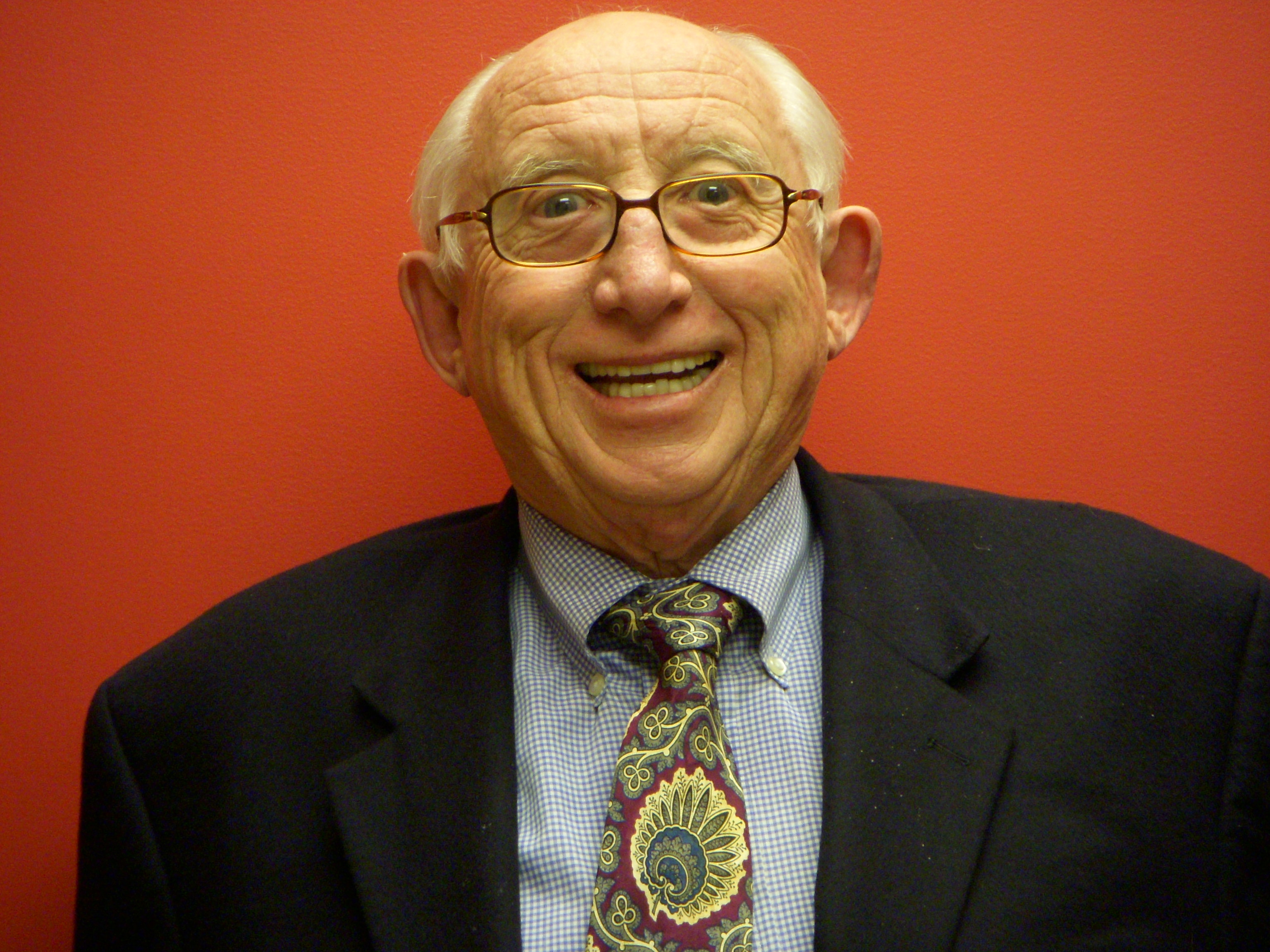I consider this a manifesto for the ME/CFS community. These are my thoughts, after nearly five years of watching the anguish and the neglect that surrounds this disease. The manifesto states what I think should be done now.
And “now” is an important word.
There is a story that Winston Churchill, when he was very old and sick, summoned the gardener at his beloved country home in Kent, Chartwell, and asked him to plant an oak tree in an open space.
The gardener, looking at his enfeebled employer, swallowed and said, “But, sir, an oak tree takes a hundred years to grow.”
“Then you’d better plant it now, hadn’t you?” said Churchill.
During World War II, Churchill used this same execution imperative approach to work. Churchill used to stick little, pre-printed notes — long before the days of Post-it notes — on his paperwork for staff that read, “Action This Day.”
One of the first things that struck me about ME/CFS, when I started writing and broadcasting on the subject, was how slow the pace of progress was, even as the suffering suggested the need for immediate action. The second was how stingy public and private funding for research was then and is now.
I want my friends and loves, who are in the grip of a relentless affliction, whose days are torn from the calendar of hell, to be cured in my lifetime — and I am 74. I want to be able to hold them as whole happy people; the people they were before they were struck down by an enemy they did not provoke, a monster they do not deserve, an unseen captor, a malicious jailer that takes daily life and makes it into a tool of torture and punishment.
One year, the CFIDS Association of America was able to declare proudly that it had raised $2 million. The National Institutes of Health, a federal agency that should be pushing research, granted a paltry $5 million for ME/CFS in 2013. By comparison, in that same year, I learned that a consortium of foundations was sponsoring a green power marketing initiative at $6 million a year.
I have spent nearly 50 years writing about federal funding for energy, science and technology, and the sums of money spent has been in the tens of billions of dollars. One company gets more than $60 million year-in and year-out for nuclear fusion research — and I see nothing wrong with that.
But when I look at the federal funding for ME/CFS research, I am aghast: It is not funded at a level that can be expected to produce results. It is, to my mind, a crime against the sick; morally, if not criminally, indictable. To allow the scale of suffering that attends ME/CFS, without making research on the disease a national priority, is close to willful neglect; an abrogation of the high purposes of Hippocrates’ calling.
Other governments are not free of guilt for the suffering – and the United Kingdom stands out among the many offenders. These governments have been seduced by the fraudulent blandishments of the psychiatric lobby. If a ME/CFS patient refuses to accept a psychiatric diagnosis, he or she can either be imprisoned or forced to suffer the insinuation that they are not physically sick, even if they cannot get out of bed. There are cases in Europe where patients refusing the prescribed psychiatric treatment have been imprisoned, as happened most recently to Karina Hansen in Denmark.
The United States is experiencing a boom in natural gas production and the deployment of solar panels on rooftops. These successes are the manifestation of substantial research money committed in the 1970s, and sustained since then. Science needs certainty of support, both political and financial, to triumph.
The key is sustained funding; a splash here and a dash there just won’t do — it won’t do anything. ME/CFS researchers need to concentrate on their work, wherever that work takes them, free from the stress of insecure funding.
ME/CFS deserves the level of effort that might lead to success. It is not getting it now, and it never has had it.
It is appalling that Dr. Ian Lipkin, the highly respected virus hunter, is trying to raise $1.27 million through crowdfunding to investigate the role of microbiome in ME/CFS. What we are seeing is a scientist forced to beg. Yet this fundamental research, with application for diseases beyond ME/CFS, is at the frontier of biomedical science.
If we, as a nation, are to believe that we are in the forefront of science, we must be in the forefront of biomedical research as well as the forefront of computers, telecommunications, materials and physics. We almost humbled polio, and developed powerful drug therapies for AIDS. We can transplant vital organs and gave hope to the leper. The advances came neither cheaply nor easily, but they have saved lives beyond counting and eased suffering beyond enumeration. Why not for ME/CFS? Why not?
There is eloquence in the voices of the community. But they are widely distributed and, sadly, they fall mostly on ears of those who already know them — the sick, their families and their advocates.
The voices need to be heard widely, need to be channeled and need to be focused. A million points of light won’t do it. A laser, a great beam, will do it.
There are three principal reasons why these voices are not heard by those who need to hear them:
1. ME/CFS is a hard story for the media to grasp.
2. ME/CFS has no celebrity doing what Elizabeth Taylor did for AIDS, what Jerry Lewis did for Multiple Sclerosis, or what Michael J. Fox is doing for Parkinson’s Disease.
3. ME/CFS has no presence in Washington.
Of the three, the last is the most critical to act on, and it is the one that would produce the most measurable result. Simply stated: Being on the ground in Washington every day is the essential step the community has to take.
To get results in Washington, you need to-see-and-be-seen in the daily life there. Letters and petitions do not have nearly the impact as a Washington denizen talking to a decision-maker in person.
Happily this would amount to one very visible person, who strolls the halls of Congress, lunches at the clubs and restaurants, like the Cosmos or Metropolitan clubs, or the Monocle Restaurant on Capitol Hill. Once, I was mentioned in the Wonkette blog because I was spotted entering Bistro B, a favorite restaurant of the powerful, and those who think they are powerful.
If your children attend one of the power schools, like St. Alban’s or Sidwell Friends, contacts can be made and deals can be done at the events. A friend of mine enlisted President Bill Clinton’s help for a cause because their children went to the same school.
It may strike you as banal, but it is the Washington political game. Learn to play it.
Washington is a society of people who are impressed with each other. It is important to be known. If you are invited to the annual White House Correspondents’ Association or Alfalfa Club dinners, you are known. The next step is to be known for ME/CFS advocacy.
Once known, the perfect advocate/lobbyist will morph into a resource, a voice for others in Washington: a source of information for congressional aides trying to understand the budget requests of agencies, and a source of information for reporters writing about diseases of the immune system.
A voice in Washington puts pressure on government agencies to do the right thing, and on members of Congress to authorize and appropriate money. The advocate/lobbyist can learn, through the hearing process, about the diligence and transparency of the agencies and the quality of their operations; to see if they are doing the job or treading water, to see how transparent their operations are and the quality of professionals operating programs.
Another salutary source of pressure in Washington is the press corps. It covers not just politics but also the functioning of government. The pinnacle of power in the corps are still The Washington Post, The New York Times and The Wall Street Journal. But the news agencies, The Associated Press, Bloomberg and Reuters, followed by a veritable media army that cover politics and programs, including Politico, The Hill, Roll Call, National Journal, and the specialized medical publications also play important roles.
Fifty years ago, the center of media activity was New York. Now it is Washington. A professional advocate for ME/CFS needs to cultivate the media and to be comfortable with the currency of Washington and to trade in it. That currency is information.
Washington is a great information market. The successful lobbyist/advocate is, by the nature of the city and its functioning, an information broker.
The sums of money that will be needed to accelerate research cannot be calculated and could be very substantial. Research funding, above all, needs to be sustained at predictable levels.
The pharmaceutical industry figures that a new drug can cost upwards of $1.2 billion. I mention it only to hint at the vast amount of money needed for drug research and development.
How much ME/CFS will need and for how long is an existential question. Money stimulates research, attracts new young minds to the field and leads to success. Right now, there is so little money funding so few researchers in ME/CFS.
In the United States, that success may be a long time in coming – too long for those for whom today will be a living hell, as yesterday was and tomorrow will be.
I figure that for as little as $1 million, a start toward a Washington presence can be made. That would cover one advocate/lobbyist, one office and one assistant for one year; not a smidgeon of attention from a giant lobbying firm, but a dedicated ME/CFS standard-bearer. Funding should grow within a year, as the ME/CFS cause comes out of the shadows.
I operated a small business in Washington for 33 years, and I am confident that a new ME/CFS presence there will reverse the disease’s funding fortunes at NIH, increase media awareness, and cause the big foundations to sit up and take notice. It would give ME/CFS the kind of presence that other diseases with active advocates – COPD, ALS, MS and others — have in Washington and the nation.
If this is not done the government will continue to ignore the case for ME/CFS. Worse, the new billionaires who are beginning to throw real money into biomedical research will not know about ME/CFS. It will be hidden in plain sight much as it has been from the wider public.
ME/CFS needs a place on the national agenda if it is to be understood and cured in reasonable time, and if the very best minds are to be attracted to the task and to stay with it. That Churchill oak needs to be planted now, and in sight of the U.S. Capitol.
Llewellyn King is the creator of ME/CFS Alert on YouTube, which he co-hosts with Deborah Waroff. Their video work is being supported through donations on the fundraising Web site GoFundMe.






